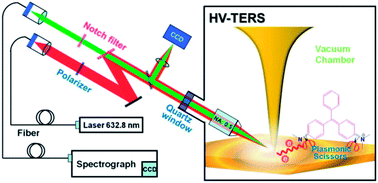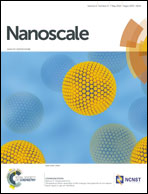Molecular resonant dissociation of surface-adsorbed molecules by plasmonic nanoscissors†
Abstract
The ability to break individual bonds or specific modes in chemical reactions is an ardently sought goal by chemists and physicists. While photochemistry based methodologies are very successful in controlling e.g. photocatalysis, photosynthesis and the degradation of plastic, it is hard to break individual molecular bonds for those molecules adsorbed on the surface because of the weak light-absorption in molecules and the redistribution of the resulting vibrational energy both inside the molecule and to its surrounding environment. Here we show how to overcome these obstacles with a plasmonic hot-electron mediated process and demonstrate a new method that allows the sensitive control of resonant dissociation of surface-adsorbed molecules by ‘plasmonic’ scissors. To that end, we used a high-vacuum tip-enhanced Raman spectroscopy (HV-TERS) setup to dissociate resonantly excited NC2H6 fragments from Malachite green. The surface plasmons (SPs) excited at the sharp metal tip not only enhance the local electric field to harvest the light incident from the laser, but crucially supply ‘hot electrons’ whose energy can be transferred to individual bonds. These processes are resonant Raman, which result in some active chemical bonds and then weaken these bonds, followed by dumping in lots of indiscriminant energy and breaking the weakest bond. The method allows for sensitive control of both the rate and probability of dissociation through their dependence on the density of hot electrons, which can be manipulated by tuning the laser intensity or tunneling current/bias voltage in the HV-TERS setup, respectively. The concepts of plasmonic scissors open up new versatile avenues for the deep understanding of in situ surface-catalyzed chemistry.


 Please wait while we load your content...
Please wait while we load your content...